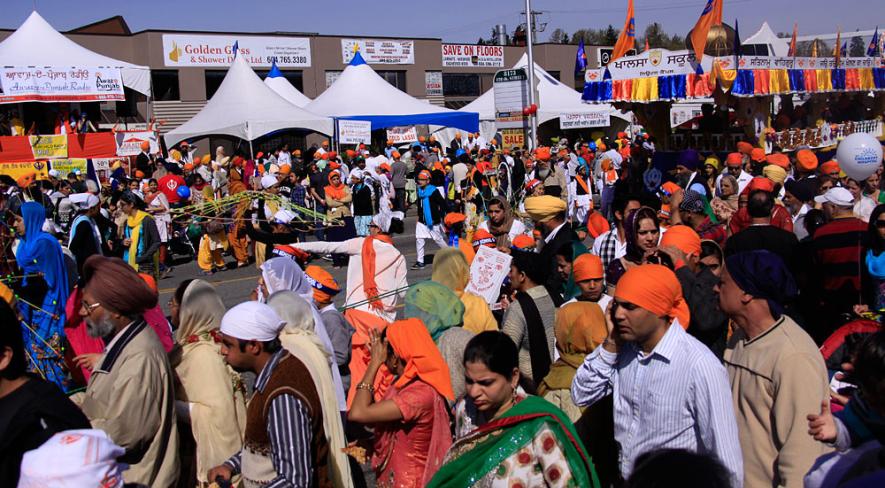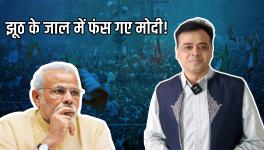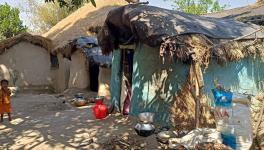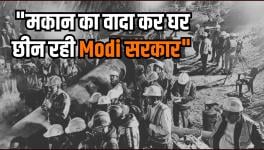Sikhs in Canada and the Indian Government

Representational Image. Image Courtesy: Wikimedia Commons
The recent decision of the Canadian government to expel a top diplomat from the Indian High Commission has become a major national issue in India. The news media is buzzing with analyses and condemnation, with the underlying rationale that the Canadian government has not stopped anti-India activities.
According to the Canadian government, as Prime Minister Justin Trudeau said in Parliament, the Royal Canadian Mounted Police (RCMP) has found a “credible link” between Indian agencies and the murder of Hardeep Singh Nijjar on 18 June. Nijjar, a Canadian citizen, was believed to be an activist of the Khalistan Tiger Force, a separatist outfit active abroad.
India has reciprocated by asking a Canadian diplomat to leave and, going further, banned visa provisions for Canadian citizens. In diplomatic contestations, certain facts get obliterated. India’s police forces, including Punjab Police, have earned notoriety abroad by executing fake encounters of gangsters and terrorists. When illegal practices become the norm, and people begin to justify or normalise them, it is expected that certain quarters in our country would not appreciate the Canadian government’s move.
Sikhs in Canada
That said, the sensitivity of the Indian government towards Khalistani organisations is equally justified, considering the history. On 23 June 1985, Khalistani activists bombed the Montreal-Delhi Air India Flight 182, killing 329 people. Even then, in the 1990s, unverified suspicions were aired in Canada about Indian intelligence agencies’ involvement in the bombing.
At any rate, the trial for this bombing went on in Canada for years, becoming the costliest in its history—the Canadian government spent C$130 million on it. Only one person, Inderjit Singh Reyat, who confessed, got a fifteen-year sentence in 2003. Ripudaman Singh Malik and Ajaib Singh Bagri, thought to be the main conspirators of the bombing, were acquitted.
In the late nineties, the Canadian government was highly critical of the Indian government after India conducted the Pokhran II nuclear test on 11 May 1998. Former Indian Armed Forces and police personnel have encountered numerous difficulties securing Canadian visas due to concerns over human rights violations. Indeed, during the Sikh militant movement in the 1980s, many Sikhs in Canada supported the separatist groups with money transfers. There were instances of some returning to India to join the militants.
The position and perspective of India concerning Canada can also be understood in terms of the existence and prevalence of such elements and processes, which the Canadian government has not addressed.
Canada’s People and Characteristics
Canada’s vast land mass, larger than the United States of America, has a population of about four crore people, who can be broadly characterised in four ways: The First Nation comprising the indigenous native people who lived in Canada before European arrivals; the Founding Nations—mostly English and French—who occupied its entire territory; and the heterogeneous remaining population, called immigrants. The last group includes Americans, Europeans, Africans and Asians.
The Sikhs in Canada are about two per cent of the population, close to their percentage share in India’s population. Under the premiership of Pierre Trudeau in the late 1960s and early 1970s, Canada pronounced itself a bilingual and multicultural society and the federal government passed the Multiculturalism Act of 1985, making it the first multicultural society.
Canada, too, has experienced separatism, and a referendum was held in Quebec, whose French-speaking people wanted their separate country—obviously, the separatists could not win. However, as a country of immigrants, the Canadian state and society know that long-distance nationalism exists among them. But the state never interferes in these activities so long as they remain within the frame of Canadian laws.
Long Distance Sikh Nationalism
The Sikhs in Canada have a long history of long-distance nationalism, which is no secret either. The Sikhs migrated to Canada at the turn of the 20th century after the Diamond Jubilee celebrations of Queen Victoria’s rule in 1897. For these celebrations, the British brought soldiers from various colonies to showcase them in multiple countries.
Sikh soldiers visited Canada and, soon after, began to immigrate to the country after retirement. Within a decade, some of them began to organise and contribute to the liberation of India. The Ghadar Party came into existence, involving the Sikhs and others in the United States and Canada.
Many Sikhs returned to India during the First World War to wage war against British colonialism. They failed, but the fire of nationalism was ignited among the Punjabis. After independence, Sikh migrations to English-speaking Western nations resumed in a big way, and England, the United States, Canada and Australia were their main destinations.
Many Sikhs who had settled in these countries began to look back at their native land for various purposes—in the 1960s, under an Indian government scheme, Sikhs purchased Massey Ferguson tractors in England to send to their families in Punjab. These tractors paved the way for the Green Revolution. This was the second phase of Sikh long-distance nationalism.
The third phase began when the militant Khalistan movement started in the 1980s, which the Indian state effectively suppressed in the early 1990s.
The fourth phase started in 1992 when India announced it would liberalise its economy and invited Non-Resident Indians (NRIs) to invest in India. It was the first invitation to the Indian diaspora to take an active interest in the Indian economy. Of course, politics comes first if an investor is to make a sensible investment, which means the perception of a favourable environment makes a big difference. Accordingly, the government of India initiated schemes for NRIs, from opening up NRI accounts in Indian banks to allowing numerous opportunities to NRIs to invest in industries. The fifth phase began with the diaspora’s engagement in Indian politics. The Punjabi diaspora began to support the Aam Adami Party in Punjab, which became evident in the 2017 Assembly election.
However, even before 2017, as the historian Parita Mukta has comprehensively shown, the Gujarati diaspora supported communal Hindu outfits in their campaigns against Muslims. Since 2014, the BJP has sought to organise its supporters among the diaspora by encouraging them to set up pro-Indian associations whose activities became quite visible during Prime Minister Narendra Modi’s overseas visits.
The Canadian government is accustomed to long-distance nationalism and does not interfere in the activities of Canadian Sikhs or other groups. As the novelist Michael Grant Ignatieff, a former leader of the Liberal Party, describes in his book Blood and Belonging: Journeys into the New Nationalism, the Ukrainian diaspora in Canada had a similar experience. Ignatieff writes that a section of the Ukrainian diaspora would sit outside the Soviet embassy, demanding an independent Ukrainian state. The Canadian government never interfered in their activities.
Many Western countries have behaved similarly regarding exiled leaders or diaspora demanding sovereignty in their country of origin. So, it might be erroneous to sweep aside the RCMP findings as incorrect and meant to please its political masters, while also recalling that Justin Trudeau was cold-shouldered during his 2018 India visit and the G20 Summit, again reportedly over the Khalistan issue.
This apart, in the developed world, there is a growing perception that the Indian political dispensation is suppressing its minorities. It is evident from the recent visit of Modi to the United States, where a journalist asked him a pointed question about the human rights situation.
Visas and Punjab
The assumption that direct cash remittances by the diaspora are the only important factor in the native country’s economy is mistaken. When the Indians abroad visit their native land, they spend money in various ways—tourism, transportation, communication and, above all, shopping.
India’s decision to stop visas for Canadian citizens will economically hurt Punjab in particular. For, most Punjabi diaspora visit India between October and March. They will be unable to visit India after the visa ban.
Punjab has been the primary beneficiary of the diaspora’s direct and indirect contributions. Politically, the ruling party will struggle to win the Sikh votes. It is also dangerous to assume that all Sikhs support the Khalistanis. It has never been the case. A few are raising the issue, but making it larger-than-life-and-reality will catalyse the labelling of a minority community. If it emerges, the electoral gain of such a situation may not turn out to be as one may expect.
The author was a professor of sociology at Guru Nanak Dev University, Amritsar, and former president of the Indian Sociological Society. The views are personal.
Get the latest reports & analysis with people's perspective on Protests, movements & deep analytical videos, discussions of the current affairs in your Telegram app. Subscribe to NewsClick's Telegram channel & get Real-Time updates on stories, as they get published on our website.























